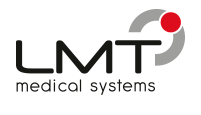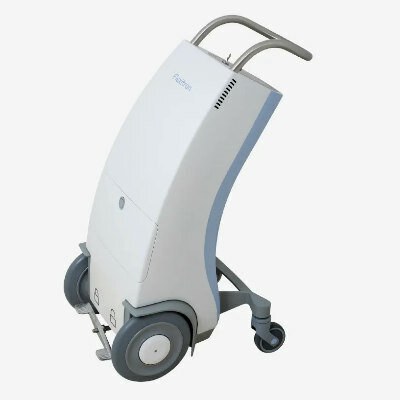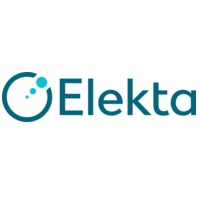New MRI Technologies Advance Image-Guided Radiotherapy
|
By MedImaging International staff writers Posted on 01 May 2018 |

Image: MRIdian SmartVISION enhancements advance cancer RT (Photo courtesy of ViewRay).
New magnetic resonance imaging (MRI) pulse sequences and imaging enhancements further improve the precision by which radiotherapy (RT) is delivered to treat cancer.
Designed for the ViewRay (Oakwood Village, OH, USA) MRIdian SmartVISION system and the MRIdian Linac RT system, the new T1w and T2w pulse sequences can deliver diagnostic-quality MRI during RT treatments by providing refined high-definition visualization and enhancing diagnostic contrast between cancerous and healthy tissues. Newly introduced diffusion weighted imaging (DWI) can also be used to distinguish between tumor and normal tissues, as well as to potentially assess and predict tumor response to RT.
Other enhancements to the SmartVISION system include a doubling of MRI speed (from four frames to eight frames per second), and twice the image resolution and signal-to-noise ratio (SNR), helping to providing brighter, more detailed anatomical images. The system also continuously detects the shape and location of tumors and organs-at-risk (OAR) in real-time, automatically turning RT beams on and off when positional changes occur.
The MRIdian Linac system integrates real-time SmartVISION data and RT delivery via a rotating gantry assembly that a houses a compact inline S-band 6 MV standing wave linear accelerator (linac), with side-coupled cavities and double focused multi-leaf collimator technology; magnetic and radiofrequency (RF) shielding technology to isolate linac and MRI systems from each other; and a 0.35 T split magnet for unrestricted beam path, volumetric, and multi-planar soft tissue imaging. The system also includes a patient couch with three degrees of freedom, two in-room couch control panels, and a laser positioning system to facilitate initial patient setup.
A control console, located just outside the treatment room, is paired to an operator console for MRI acquisition, patient positioning, dose prediction, re-optimization, and real-time tumor tracking. An additional planning station helps define structures and constraints for planning and re-optimizing treatments, with support for plan reviews via a database server that contains patient and machine data, as well as software for creating treatment plans and managing the treatment delivery process.
Designed for the ViewRay (Oakwood Village, OH, USA) MRIdian SmartVISION system and the MRIdian Linac RT system, the new T1w and T2w pulse sequences can deliver diagnostic-quality MRI during RT treatments by providing refined high-definition visualization and enhancing diagnostic contrast between cancerous and healthy tissues. Newly introduced diffusion weighted imaging (DWI) can also be used to distinguish between tumor and normal tissues, as well as to potentially assess and predict tumor response to RT.
Other enhancements to the SmartVISION system include a doubling of MRI speed (from four frames to eight frames per second), and twice the image resolution and signal-to-noise ratio (SNR), helping to providing brighter, more detailed anatomical images. The system also continuously detects the shape and location of tumors and organs-at-risk (OAR) in real-time, automatically turning RT beams on and off when positional changes occur.
The MRIdian Linac system integrates real-time SmartVISION data and RT delivery via a rotating gantry assembly that a houses a compact inline S-band 6 MV standing wave linear accelerator (linac), with side-coupled cavities and double focused multi-leaf collimator technology; magnetic and radiofrequency (RF) shielding technology to isolate linac and MRI systems from each other; and a 0.35 T split magnet for unrestricted beam path, volumetric, and multi-planar soft tissue imaging. The system also includes a patient couch with three degrees of freedom, two in-room couch control panels, and a laser positioning system to facilitate initial patient setup.
A control console, located just outside the treatment room, is paired to an operator console for MRI acquisition, patient positioning, dose prediction, re-optimization, and real-time tumor tracking. An additional planning station helps define structures and constraints for planning and re-optimizing treatments, with support for plan reviews via a database server that contains patient and machine data, as well as software for creating treatment plans and managing the treatment delivery process.
Latest Nuclear Medicine News
- New SPECT/CT Technique Could Change Imaging Practices and Increase Patient Access
- New Radiotheranostic System Detects and Treats Ovarian Cancer Noninvasively
- AI System Automatically and Reliably Detects Cardiac Amyloidosis Using Scintigraphy Imaging
- Early 30-Minute Dynamic FDG-PET Acquisition Could Halve Lung Scan Times
- New Method for Triggering and Imaging Seizures to Help Guide Epilepsy Surgery
- Radioguided Surgery Accurately Detects and Removes Metastatic Lymph Nodes in Prostate Cancer Patients
- New PET Tracer Detects Inflammatory Arthritis Before Symptoms Appear
- Novel PET Tracer Enhances Lesion Detection in Medullary Thyroid Cancer
- Targeted Therapy Delivers Radiation Directly To Cells in Hard-To-Treat Cancers
- New PET Tracer Noninvasively Identifies Cancer Gene Mutation for More Precise Diagnosis
- Algorithm Predicts Prostate Cancer Recurrence in Patients Treated by Radiation Therapy
- Novel PET Imaging Tracer Noninvasively Identifies Cancer Gene Mutation for More Precise Diagnosis
- Ultrafast Laser Technology to Improve Cancer Treatment
- Low-Dose Radiation Therapy Demonstrates Potential for Treatment of Heart Failure
- New PET Radiotracer Aids Early, Noninvasive Detection of Inflammatory Bowel Disease
- Combining Amino Acid PET and MRI Imaging to Help Treat Aggressive Brain Tumors
Channels
Radiography
view channel
Novel Breast Imaging System Proves As Effective As Mammography
Breast cancer remains the most frequently diagnosed cancer among women. It is projected that one in eight women will be diagnosed with breast cancer during her lifetime, and one in 42 women who turn 50... Read more
AI Assistance Improves Breast-Cancer Screening by Reducing False Positives
Radiologists typically detect one case of cancer for every 200 mammograms reviewed. However, these evaluations often result in false positives, leading to unnecessary patient recalls for additional testing,... Read moreMRI
view channel
PET/MRI Improves Diagnostic Accuracy for Prostate Cancer Patients
The Prostate Imaging Reporting and Data System (PI-RADS) is a five-point scale to assess potential prostate cancer in MR images. PI-RADS category 3 which offers an unclear suggestion of clinically significant... Read more
Next Generation MR-Guided Focused Ultrasound Ushers In Future of Incisionless Neurosurgery
Essential tremor, often called familial, idiopathic, or benign tremor, leads to uncontrollable shaking that significantly affects a person’s life. When traditional medications do not alleviate symptoms,... Read more
Two-Part MRI Scan Detects Prostate Cancer More Quickly without Compromising Diagnostic Quality
Prostate cancer ranks as the most prevalent cancer among men. Over the last decade, the introduction of MRI scans has significantly transformed the diagnosis process, marking the most substantial advancement... Read moreUltrasound
view channel
Deep Learning Advances Super-Resolution Ultrasound Imaging
Ultrasound localization microscopy (ULM) is an advanced imaging technique that offers high-resolution visualization of microvascular structures. It employs microbubbles, FDA-approved contrast agents, injected... Read more
Novel Ultrasound-Launched Targeted Nanoparticle Eliminates Biofilm and Bacterial Infection
Biofilms, formed by bacteria aggregating into dense communities for protection against harsh environmental conditions, are a significant contributor to various infectious diseases. Biofilms frequently... Read moreGeneral/Advanced Imaging
view channel
New AI Method Captures Uncertainty in Medical Images
In the field of biomedicine, segmentation is the process of annotating pixels from an important structure in medical images, such as organs or cells. Artificial Intelligence (AI) models are utilized to... Read more.jpg)
CT Coronary Angiography Reduces Need for Invasive Tests to Diagnose Coronary Artery Disease
Coronary artery disease (CAD), one of the leading causes of death worldwide, involves the narrowing of coronary arteries due to atherosclerosis, resulting in insufficient blood flow to the heart muscle.... Read more
Novel Blood Test Could Reduce Need for PET Imaging of Patients with Alzheimer’s
Alzheimer's disease (AD), a condition marked by cognitive decline and the presence of beta-amyloid (Aβ) plaques and neurofibrillary tangles in the brain, poses diagnostic challenges. Amyloid positron emission... Read more.jpg)
CT-Based Deep Learning Algorithm Accurately Differentiates Benign From Malignant Vertebral Fractures
The rise in the aging population is expected to result in a corresponding increase in the prevalence of vertebral fractures which can cause back pain or neurologic compromise, leading to impaired function... Read moreImaging IT
view channel
New Google Cloud Medical Imaging Suite Makes Imaging Healthcare Data More Accessible
Medical imaging is a critical tool used to diagnose patients, and there are billions of medical images scanned globally each year. Imaging data accounts for about 90% of all healthcare data1 and, until... Read more
Global AI in Medical Diagnostics Market to Be Driven by Demand for Image Recognition in Radiology
The global artificial intelligence (AI) in medical diagnostics market is expanding with early disease detection being one of its key applications and image recognition becoming a compelling consumer proposition... Read moreIndustry News
view channel
Bayer and Google Partner on New AI Product for Radiologists
Medical imaging data comprises around 90% of all healthcare data, and it is a highly complex and rich clinical data modality and serves as a vital tool for diagnosing patients. Each year, billions of medical... Read more





















